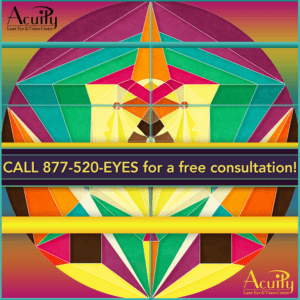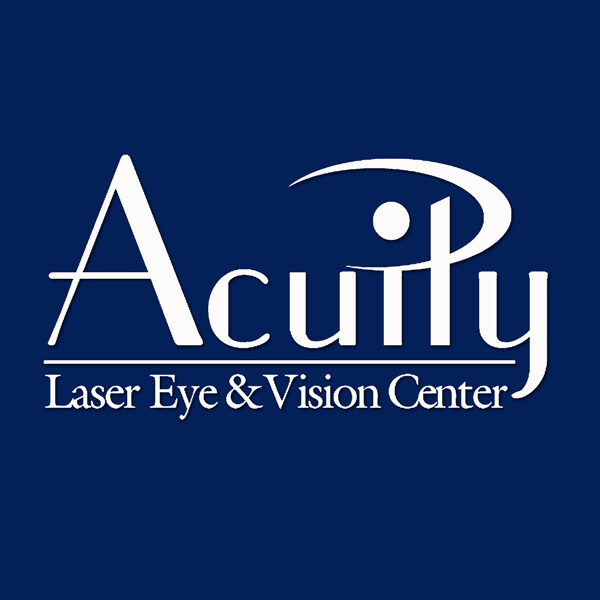
– By SCOTT W. TUNIS, M.D., F.A.C.S.
In order to understand how laser vision correction corrects astigmatism, it is important to understand the nature of astigmatism, how it causes blurred vision, and how it can be corrected by different methods.
Astigmatism is not a disease, but rather a refractive error of the eye which simply causes blurred vision. If the cornea (the front window of the eye) has a surface curvature which is spherical, such as the shape of a basketball, the eye has no astigmatism. If the cornea has a toric shape, like the surface of a football, it has two different curvatures on the surface, and has astigmatism. These two curvatures are usually at right angles to each other with one curvature steeper and one flatter. A greater difference in curvatures creates a larger amount, or magnitude, of astigmatism.
astigmatism. These two curvatures are usually at right angles to each other with one curvature steeper and one flatter. A greater difference in curvatures creates a larger amount, or magnitude, of astigmatism.
 In addition, astigmatism also has an axis (direction) which is determined by the orientation of the steeper curvature of the cornea. Put another way, the football shape of the cornea can be pointed in any direction like the needle of a compass. Thus, astigmatism has a magnitude and a direction which are equally important.
In addition, astigmatism also has an axis (direction) which is determined by the orientation of the steeper curvature of the cornea. Put another way, the football shape of the cornea can be pointed in any direction like the needle of a compass. Thus, astigmatism has a magnitude and a direction which are equally important.
Glasses and contacts correct blurred vision from astigmatism by using the opposite shape of the correcting lens to “cancel out” the abnormal shape of the eye. For this reason, the frame of the glasses or the fit of the contacts must match exactly the correct magnitude and direction of the astigmatism of the eye. Any deviation in the compensating lens will cause blurred or fluctuating vision. This is why patients with astigmatism and glasses can tolerate very little twisting or maladjustment of the frame as it sits on their face.
Similarly, patients with toric  (astigmatism correcting) contact lenses frequently notice large fluctuations in vision as the contact lens spins on the eye. These problems arise because glasses and contacts simply compensate for the abnormal shape of the underlying cornea by adding the opposite shape in the correcting lens in front of the eye.
(astigmatism correcting) contact lenses frequently notice large fluctuations in vision as the contact lens spins on the eye. These problems arise because glasses and contacts simply compensate for the abnormal shape of the underlying cornea by adding the opposite shape in the correcting lens in front of the eye.
Laser vision correction and LASIK, on the other hand, actually correct the astigmatism by reshaping the cornea, eliminating the two different curvatures, thereby creating the correct spherical shape of the cornea. Laser vision correction actually corrects astigmatism, it does not compensate for the refractive error in a similar manner to glasses and contacts. As a result, patients with astigmatism frequently notice better vision with LASIK than with contacts or glasses. In fact, with the newest laser software, LASIK can frequently correct larger magnitudes of astigmatism than can even be placed in glasses or is available in contacts. In addition, patients with small amounts of astigmatism who do not wear toric contacts notice better vision after LASIK than with spherical contacts.
https://scottwtunismd.wordpress.com/2010/05/29/“does-lasik-correct-astigmatism-better-than-glasses-or-contact-lenses”/


Comments are closed